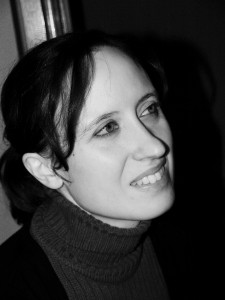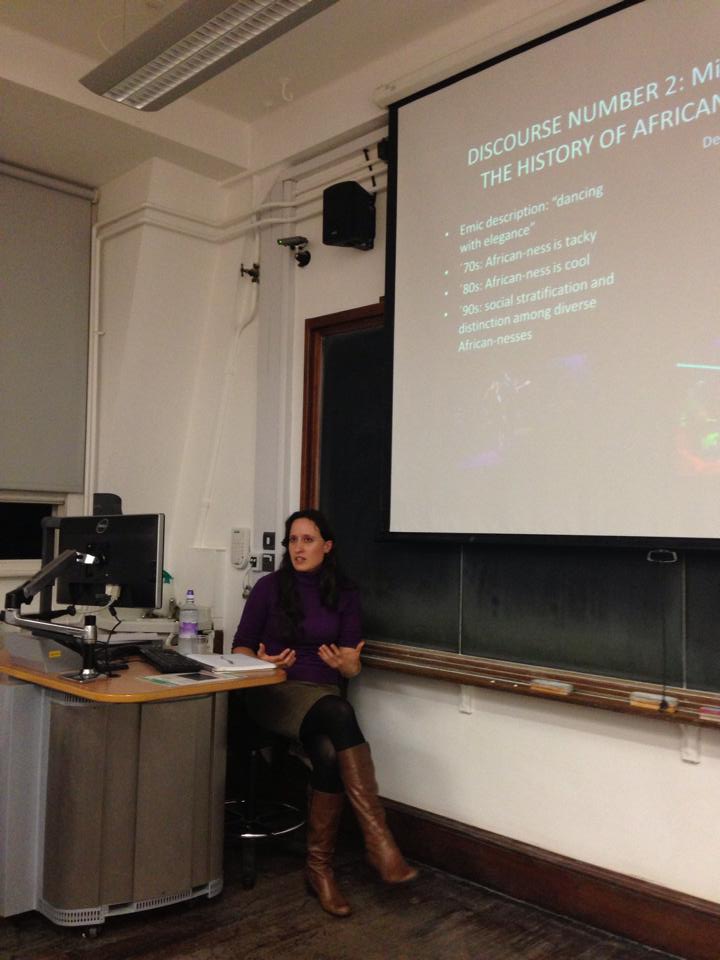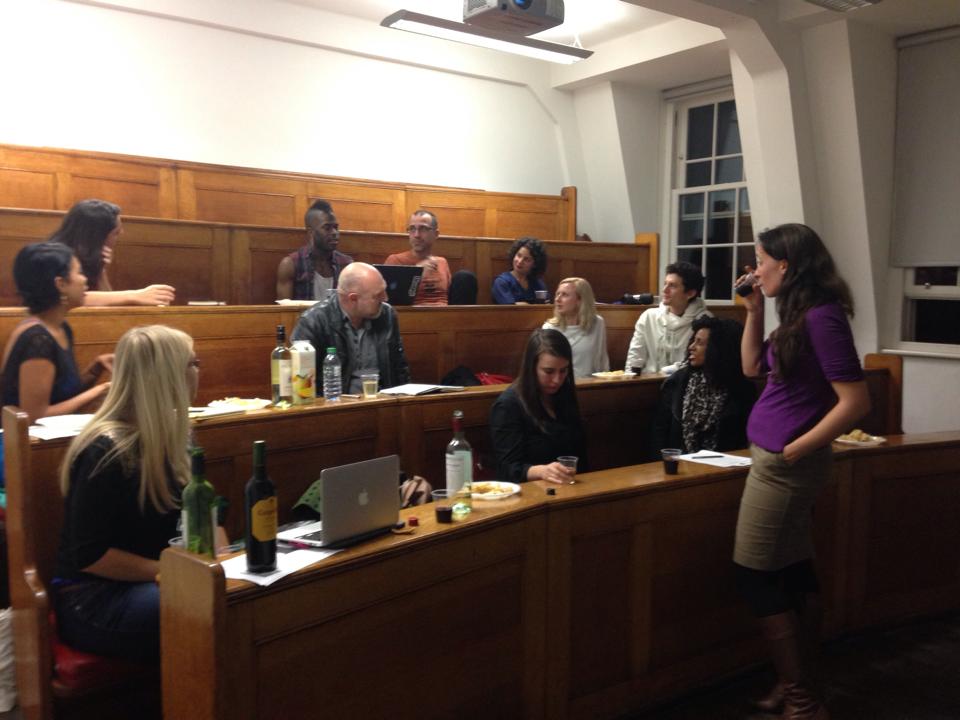All posts by Modern Moves
Our first Moving Conversation with Magna Gopal and Ato Quayson is imminent!
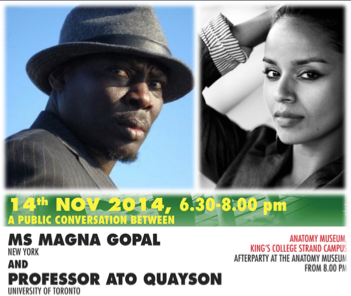
Our Moving Conversation #1 brings together Ms. Magna Gopal, renowned salsa dancer whose life spans India, Canada and New York, and Professor Ato Quayson, FGA, FRSC, of Ghana and the University of Toronto. Magna is internationally acknowledged as one of the finest salseras today. Ato’s most recent book ‘Oxford Street, Accra: City Life and the Itineraries of Transnationalism’ (Duke University Press, 2014) includes a detailed description of salsa in Accra.
This is bound to be an electrifying encounter – two high profile personalities in their respective worlds talking to each other about dance, diaspora, transnationalism and other shared passions.
Enjoy the Conversation and move with our guests into the afterparty (8pm – 10pm). Drinks, DJs and the dancefloor await you!
Friday 14th of November
6.30pm-10pm
Anatomy Museum, King’s College London, Strand Campus.
Afterparty from 8pm onwards at Anatomy Museum, King’s College London, Strand Campus: all welcome!
The event is free but please register online here!
IN THE DARK with Ø [PHASE| + THE BLACK MADONNA + EDVARDAS RUT
This year the King’s College London Arts and Humanities Festival is themed on the “underground,” a term Ananya Kabir explored in her fascinating Inaugural Lecture “A Secret History of the Dance Floor.” Tonight the party continues with an East London underground house and techno party curated by Modern Moves team member Madison Moore. In many ways this basement extravaganza borrows from the UK’s strong tradition of raving and illegal dance parties, and in others it taps into the history of the rent parties during the 1920s in New York and David Mancuso’s private loft parties in the 70s.
Tonight’s free event features the best in contemporary house and techno, with UK techno artist Ø [Phase} and Chicago house legend The Black Madonna. Edvardas Rut, of London’s long-running Jaded Afterhours, kicks the party with deep house grooves. There won’t be any alcohol onsite, so you should bring your own! Seriously, what’s more underground than a dance party in an East London basement?
Moving Group #3: the kizomba dance floor
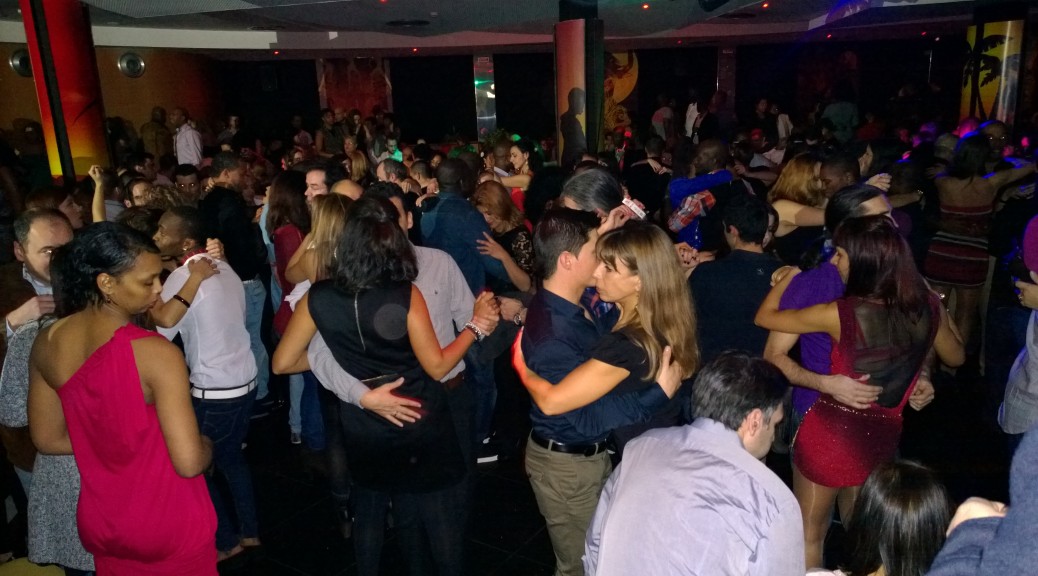
Moving Group 3:
“The Commodification of Kizomba: a Bridge and a Wall between Cultures”
Livia Jiménez Sedano (INET-MD, UNL)
5pm-7pm Friday 31 October
Room K6.63
King’s College London, Strand Campus
For our third Moving Group, Livia Jiménez Sedano, postdoctoral researcher at the University of Lisbon, spoke to us about the politics, pleasures and identity formations around the Angolan social dance form, Kizomba.
We are delighted to bring Livia into our Modern Moves network as an Associated Researcher!
Featured image: courtesy of Livia Jiménez Sedano
Currently working on her postdoctoral project “Dancing ethnicities in a transnational social world,” Livia also participates in a research project on Islamophobia and gender relations in the Muslim Diaspora in Spain. With a PhD in 2011, and three MAs (in Migrations, Berber studies, and Professional Expertise in Islamic religion and culture), and several languages at her command, including Arabic, Berber, German, and, of course, Spanish, Portuguese, and English, Livia is certainly our kind of Modern Moves person! Since 2012, she has done fieldwork in dancing contexts in Madrid and Lisbon including African discos, dance schools, dancing associations and public celebrations. This material formed the basis of her exciting and illuminating talk to us.
In the abstract Livia sent to us prior to the talk, she described her subject as follows: ‘The social dance known as “kizomba” became a commodity offered at dance schools in Portugal during the nineties. Since then, it has spread all over the world with great success: the number of teachers, dance schools, workshops and international congresses has increased dramatically in the last ten years. This phenomenon has not led in general to a better understanding of the cultural contexts where this form of dance originated and is still danced nowadays. In fact, at least in South Europe, people of African origin and students of kizomba schools have become to some extent divergent dancing communities. Nevertheless, there is a tension between approximation, curiosity, dancing together and mutual exclusion. In this sense, we can say that kizomba has become both a bridge and a wall between cultures. In order to understand these complex processes, we first need to go back in time and analyze how the diverse dancing communities were created and diverged in Lisbon since the sixties until today. The recent history of decolonization and migrations between the PALOPs and Portugal, the economic improvement of South Europe in the nineties and the actual financial crisis are the key factors. Through an ethnographic dense description of a dance floor, we will explore the way moving bodies tell us about this history.’
What was fascinating about Livia’s talk was the painstaking detail she deployed to construct a viable methodology for studying a subject as slippery and ephemeral as the dance floor. The dance floor is no book you can return to time and time again to refer at will or refine an argument; there is no way of reconstructing what happened during a night of social dance; even if you used the most skilled dance photographer you would not be able to capture all aspects of the dancers’ interactions with each other and the music. Nevertheless Livia managed to nail it with an impressive multi-dimensional strategy which combines a) close observation of a pre-determined number of couples; b) understanding of each couple’s personal biography as placed against the larger currents of migration which brought Portuguese-speaking African people– the vectors of kizomba– to Lisbon; c) diagrammatic representation of the dance moves they inscribed on the floor d) elucidation of those schema via carefully chosen videos by other dancers already in the public domain or part of her archives; e) the use of other dancers’ comments and judgements to unlock the social meanings of their dance styles.
In the process, Livia wove a fascinating tale of the dance floor as the space to work out the relations of respect and innovation between different African-descendant generations in Lisbon, and between different categories of postcolonial Lusophone subject, in dialogue always with the dance floor as a space where inter-racial desire and inter-class tensions are worked out and played through. While all kinds of dance floors are spaces of interaction, transgression, and transformation, what was so illuminating about this talk was how it could tell us something specific about Afro-Luso social dances as, in the words of her title, a ‘bridge’ and ‘wall’ between cultures in the postcolonial Portuguese-speaking world. On the one hand, in the African and general discos of Lisbon, we see a process of whitening and re-africanisation of the dance, which enacts a process of tension between racially-defined communities, but on the other hand, inter-racial curiosity makes the dance a facilitator of communication and new forms of cultural mixing. A new ‘cool factor’ in perceptions of African-ness is accompanied by the very real occurrence of the denial of the other’s dance by turning to studio-based, less ‘natural’ styles, enacting a symbolic violence that- in a suggestive end to the talk- Livia traced to colonial practices of fetishisation and (mis)representation of subject populations as the ‘other’ to white civilisation.
Drawing on exhausting nights of research and analysis at all the major and lesser known clubs of Lisbon– from Jazzy to Barrio Latino to Ondeando and Sabura–Livia’s talk was rich in empirical detail; but it also helped all of us in the audience articulate more clearly what we set out to do when we want to work as well as work on the dance floor. The unit of analysis emerged as the dance event governed by unwritten rules regarding dress, drink, duration of dance, invitation, gender conventions, and the dance floor itself shimmered in meaning between ‘a book of history’, ‘a museum’ and even an ‘encyclopaedia in motion’, a ‘library’, and an ’embodied diary’, while the dancing body as archive was movingly recalled as the ‘last repository of memory’.
As Mahmoud Darwish had said in the context of Palestine, ‘where do the birds fly/ after the last sky’? It seems to me, in the light of Livia’s talk, they fly with the dancing body, and make the body fly. The precarious life of the dance floor is a moment of reconstructing fragmented histories, consolidating community, asserting distinctiveness through the dignity of embodied knowledge, but also reaching out and creating new human bonds through touch and sensation. This is what kizomba perhaps can tell us through its creation in the ashes of the last, violent days of the Portuguese empire and the long night of difficult decolonisation.
The discussion continued over wine, where audience members brought their perspectives from salsa and techno dance floors to extend the conversation.
Our evening concluded with a wonderful dinner at a new Modern Moves discovery, the Mexican restaurant Mestizo . On the whole, an extremely rewarding evening for all of us who were there!
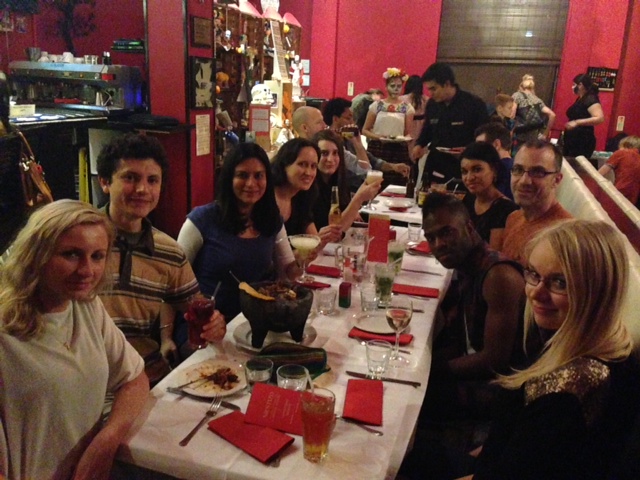
A bridge or gap on the dancefloor? The Politics of Kizomba

Is Kizomba a bridge or a wall between cultures? Our visiting colleague Livia Jiménez Sedano from the University of Lisbon joins Modern Moves to discuss the spread of Kizomba worldwide and the impact on the dance itself. Come along for the third Moving Group‘s talk on ‘The Commodification of Kizomba: a Bridge and a Wall between Cultures’!
5pm-7pm Friday 31 October
Room K6.63
King’s College London, Strand Campus
More info here
Featured image: courtesy of Livia Jiménez Sedano
Modern Moves team at PoPMOVES conference

In the middle of our Autumn events at King’s Arts & Humanities Festival, team members Madison Moore and Elina Djebbari and associated researcher Stefanie Alisch presented the first Modern Moves panel last Saturday 18th of October at PoPMOVES conference “Dancing the Politics of Pleasure”, a one-day conference organised by
The University of Chichester, Kingston University, University of Roehampton & Royal Holloway, University of London in collaboration with the Society for Dance Research.
Modern Moves and the ‘Underground’: King’s Arts and Humanities festival
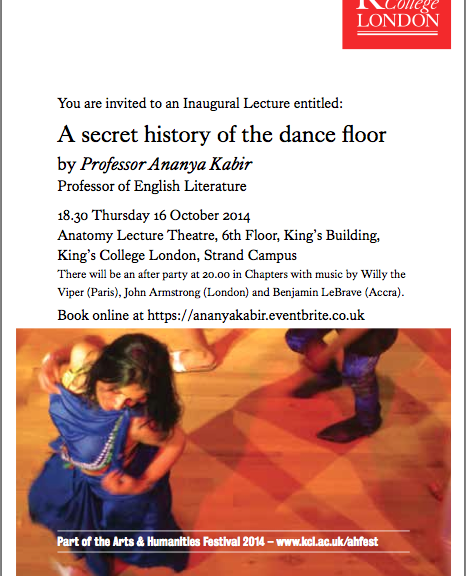
In collaboration with the Arts and Humanities festival at King’s College, London, fittingly unravelling the theme of the ‘Underground’, Modern Moves is presenting a range of research that engages with various underground activities to suit the palate of all.
Join us for our October events engaging mind and body to rethink the dance floor, DJs and diaspora!
Modern Moves’ Professor Ananya Kabir will start with a delicious discussion of the magic of the dance floor and its secret history – from drum circles and sugar plantations through to Paris Noir and New York’s Jazz Age and the global emergence of clubs. Finished off by the dance floor itself and the international DJs Wilfrid Vertueux (DJ Willy the Viper, Paris), Benjamin LeBrave (Akwaaba Records, Accra), and John Armstrong (London), with MM rhythms of the Latin, Afro-Electronic, and tropical sounds. Why would we NOT love this?!
16th October 6.30 pm onwards
Ananya Kabir’s Inaugural Lecture: A Secret History of the Dance Floor; followed by a party with international Djs playing Latin, Tropical, and Afro-Electronic sounds-
Anatomy Lecture Theatre, KCL (Party at Chapters, KCL)
Info and Booking
Madison Moore follows on Friday taking us into private liaison between DJs and dance floor. Hosting a discussion with Thursday night’s DJs Wilfrid Vertueux (DJ Willy the Viper) (Latin music), Benjamin Lebrave (African) and John Armstrong (“world beat” music), Madison will weave out a sonic narrative between moving bodies on the dance floor.
17th October 6.30 pm onwards
In the Mix: Djs, Dance Floors and Diasporas: Madison Moore in Conversation with three international Djs of Afro-diasporic styles- Anatomy Lecture Theatre, KCL
Info and Booking
To finish off, Saturday rounds up the Underground sessions with Kwenda Lima‘s Kaizen workshop, a day dedicated to a dance form unified of West African bodily moves with philosophical approaches drawn from Indic and Buddhist thought, led by live percussion. A touching and stimulating dance form emphasising the mind-body connection. Certain to be a stimulation to the open mind!
18th October, 11 am onwards.
Kaizen Dance workshop with Kwenda Lima with live Sabar drumming, Chapters, KCL
Info and Booking
And finally, the following Tuesday, Modern Moves’ advisory board member Frederick Moehn takes us on a tour of Brazilian music from underground to pop. Exploring a long historical journey of music, race, rhythm and the popular, Frederick will look at musical forms that are refractions of European contact with African populations and cultures in the New World, that move from the underground to the foreground, from the underclass to the creative class, from the counter-cultural to the Pop. Exciting! The concert will include vocal pieces from the colonial era as well as from more recent genres.
21st October, 6.30 pm onwards
Discussion and performance of Brazilian music with Fred Moehn, River Room, KCL
Info and Booking
Join Modern Moves for a stimulating and nutritious season of Underground moves!
Moçambique Africa Portuguesa – Marrabenta. Chosen by Francesca Negro.
Modern Moves’ autumn season full of lectures, DJs and dancing
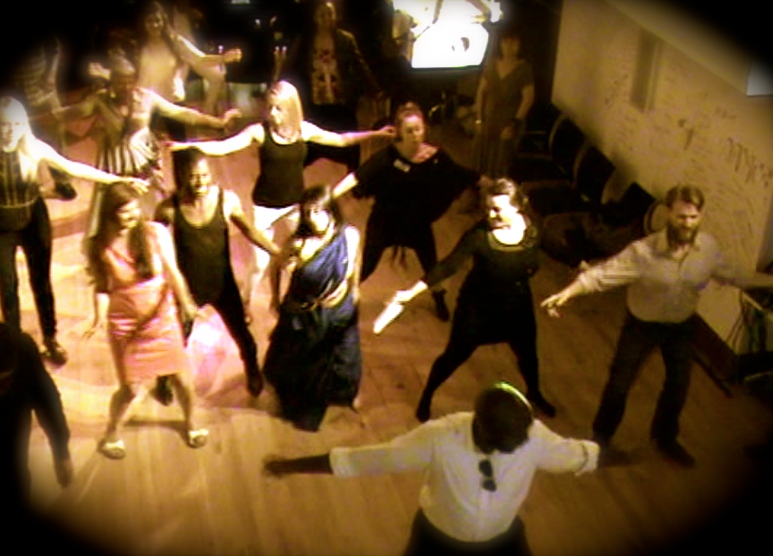
As part of the Arts and Humanities Festival at King’s College, London, Modern Moves is bringing plenty of mind and hip-busting from October 16 to 21 and wants you to be there! Forming part of the theme ‘Underground’, the events range from dance floor secrets to DJs and diaspora, to dance workshops, there is plenty going on to keep you moving!
The events are entirely free and bookable through eventbrite. Drinks and snacks will be offered to keep everyone satisfied. Find below the links for specifics and booking for each event.
16th October 6.30 pm onwards
Ananya Kabir’s Inaugural Lecture: A Secret History of the Dance Floor; followed by a party with international Djs playing Latin, Tropical, and Afro-Electronic sounds-
Anatomy Lecture Theatre, KCL (Party at Chapters, KCL)
17th October 6.30 pm onwards
In the Mix: Djs, Dance Floors and Diasporas: Madison Moore in Conversation with three international Djs of Afro-diasporic styles- Anatomy Lecture Theatre, KCL
18th October, 11 am onwards.
Kaizen Dance workshop with Kwenda Lima with live Sabar drumming, Chapters, KCL
21st October, 6.30 pm onwards
Discussion and performance of Brazilian music with Fred Moehn, River Room, KCL
For any further information, visit our Events page where more detail is provided on the events.
Voguing In Berlin
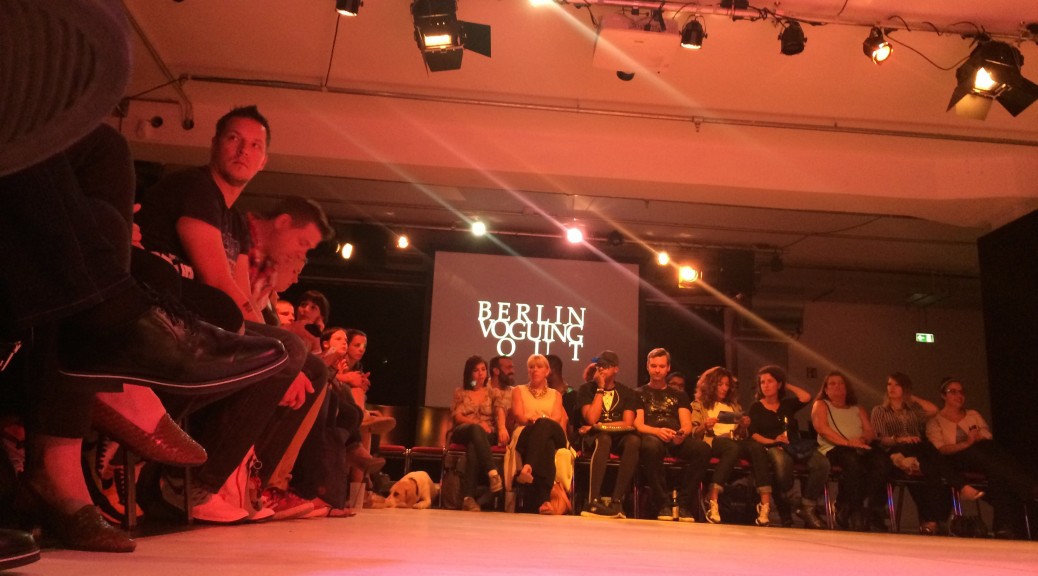
During July and part of August I spent a month in Berlin to start a brand new project on the cultural history of Saturday night. It’s no secret to anyone that Berlin is currently one of the world’s hot spots for creative nightlife, where innovation in electronic music meets extensive nights out. I’m always amused when I tell people that my new book project is on club culture because their initial reaction is always something like: “Huh. That’s a topic?”
I’ve wanted to write a book about nightlife culture ever since I taught a self-designed junior seminar at Yale called “Dance Music and Nightlife Culture in New York City” back in 2010. This nightlife book, I imagined, would be a trade book for an informed mass audience about the power of parties and pleasure. The idea for this book came after news coverage of my junior seminar hit the international airwaves and gossip pages, leading some conservative pundits to criticize Yale for allowing me to teach such a course, paving the way for others to criticize me for offering such “nonsense” to Yale undergraduate students. The strand of criticism was so thick that I even received an email from a prominent Yale donor who said “shame on you for bringing Yale’s name into the mud.”
I thought my days as a Yale graduate student were over.
Each time I saw a new critique of the course I grew more and more frustrated because you can learn a great deal about people, time, place, and politics by studying their nightlife cultures. That’s because the history nightlife is always a history of resistance to legal sanctions, a history of musical and artistic innovations, a history of the underground, and a history of self-expression.
This is the anecdotal backdrop that frames my new book project A Cultural History of Saturday Night where I aim to think about why people party and what they seek from Saturday. Of course, a book about Saturday night can’t just be about Saturday, as people party and dance and drink on any night of the week, but there is still something special historically about Saturday. How did Saturday night come to be so special? How are Saturday nights experienced by different people in various parts of the world? How does one place become a nightlife destination over another?
A major draw for me in Berlin was the Berlin Voguing Out Festival, now in it’s second year. The folks behind the Festival are at the razor edge of the voguing scene in Germany, and have done much to introduce the dance form and culture to Berliners. Knowing that Berlin will play a central role in my “Saturday night” book, working on the voguing culture in Berlin as well as the increased internationalization of the black and latino queer culture of voguing is a real opportunity for original research. I have already done some work on the US voguing scenes, but now that I am based in London this is a great opportunity to pivot my focus to the Euro voguing scenes, as to my knowledge there is not very much scholarship being produced on the topic.
The week-long Voguing Festival included a screening of the 2006 film How Do I Look, a more recent portrait of the Ball scene than Paris Is Burning and a talk back with DJ Vjuan Allure, runway coach Archie Burnett, and Berlin-based editor Jan Kedves. The screening took place at a cinema in Mitte and was packed with scholars, voguers, and various people interested in the culture. During the Q+A Archie Burnett talked about learning voguing in New York in Washington Square Park. I remember seeing voguing for the first time in the West Village on Christopher Street and along the Hudson River pier, where underage black teenagers emerged from New Jersey on the PATH train and hung out because they were too young to go to a club.
Today, cupcake shops and bougie candy stores have replaced the saucy gay sex shops and pumping black gay bars that used to line the street. So during the Q+A at the film screening I said that if Archie learned voguing in Washington Square Park and if I saw it on Christopher Street, now that New York is so gentrified what does voguing look like now? Where has it gone now?
Vjuan Allure jumped in immediately. “It looks like this,” pointing back out to the audience and reminding everyone how white the room was – full of young, white hipsters. He didn’t say it was a bad thing; just that this is the way culture always proliferates. He wasn’t at all concerned about the appropriation of the culture, because “by the time you all catch on to voguing, which we have been doing for years, we will have already moved on to the next thing.”
In other words, blackness and queerness are constantly innovating new aesthetic forms.
The festival also included a weeklong series of workshops on voguing, runway, floor performance, old way, and new way. At 25 euros a pop the courses were quite expensive so I was only able to participate in the runway workshop, which was taught by Archie Burnett. Burnett, a legend in the Ball scene, has made a career of traveling around the world and offering similar workshops, particularly in Europe and Eastern Europe.
There were only about 15 people in the workshop, some wearing heels others in more comfortable shoes, six guys (all of us queer) and the rest girls. The point of this particular workshop, as with all the others, was to give people the needed tools to compete successfully at the vogue ball – so they wouldn’t get chopped.
We began by doing our normal walks, from one end of the room towards the mirror. This was the most important task, he told us, because even though a model walk doesn’t seem natural, it should feel natural. We were told to walk like we were in a hurry to meet our friend for a drink. We were told to walk like we were on our way to a hot date. At all times he told us not to walk the way we think models are supposed to walk, and to me this was his way of allowing everyone to tap into their inner confidence.
There was something very empowering about the runway workshop because it was all about having and selling confidence. “Don’t walk to the music, walk to the attitude.” “You’re worth it,” he would say as we walked towards the mirror, and it did actually make you feel worth it and like you had a sense of value. “Own the runway” and “Own it” were his critiques to me during the class, suggesting that I needed to give just a little bit more to fully unlock myself on the runway.
https://www.youtube.com/watch?v=I8piVGKUhi4
After the group exercise of walking towards the mirror with various scenarios, we did a runway show where each person walked on their own to music to show off what we learned. I’ve never been more nervous than I was then. As much as I like wearing ridiculous clothes and being on display, I actually do not like being on display when I know everyone is watching – especially not when all the lights are on! The same anxiety I have about dancing alone in a drum circle, or in any type of circle, is the same anxiety I had when we had to walk down the runway on our own to “show off our stuff.” But the experience was cathartic in a lot of ways because people cheered you on and the act of walking down the runway did usher in some confidence.
Coming away from the runway seminar really taught me how much voguing and runway work (werk) are about confidence. That much seems obvious, but in fact loving yourself as a black or queer body has a much more pronounced impact when you live in a world that is constantly attempting to devalue your sense of worth. That’s why the incorporation of runways and walking runways and selling looks on the catwalk is such a powerful trope and mode of expression. You’re worth it.
It’s hard to underscore just how white the voguing Ball was. I’ve attended balls in New York, Paris and Washington, D.C. and though there is always a white person or two, balls are mostly full of brown, queer bodies. So it was a real shocker to go to this ball and see how white, and not always queer, the space was. I looked around the room and wondered how many guys were bisexual or gay or queer, if any, and I wondered how many of the girls were lesbian or trans. But it wasn’t just the audience that was 95% white – it was the performers, too, who hailed from Sweden and Italy and Slovakia and Russia.
“I went to my first vogue ball in Paris a few months ago and as soon as I walked in everybody had their arms crossed, like, ‘Who is this white bitch?’, but then when I danced they were more at ease and saw that I was one of them,” Sarah, one voguer told me. The anecdote really gets at the internationalization of the voguing scene, and when I asked her about why the room was so white and straight she told me that a lot of the guy attendees come because they are there supporting their girlfriends, so they might not have any direct connection to queerness or queer culture except this.
Interestingly, the panel of judges, all legends from the New York ball scene, did a lot of work to teach and educate the audience about ball culture. They reminded the room that this is a black queer culture. They did a lot to preserve the culture in terms of specific dance moves and performance categories to insure that the integrity of voguing and ball culture didn’t evaporate, even in its cultural translation. Given how quickly and how expansively voguing has spread around the world I think it’s great to try to preserve the culture, using cultural transmission as a pedagogical tool, too.
MADISON MOORE


